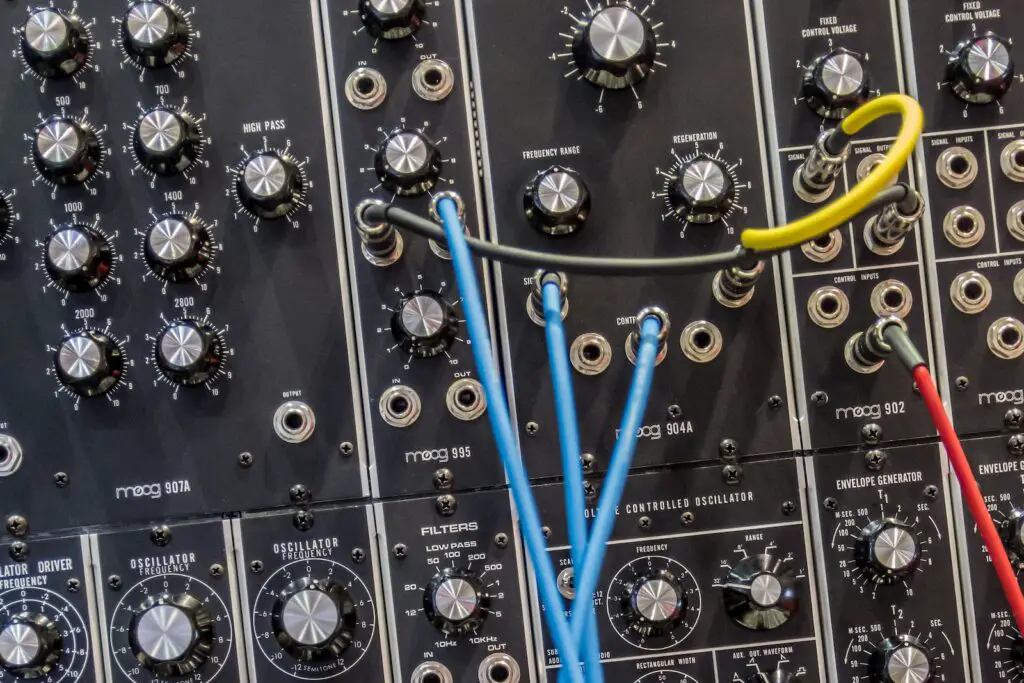Support our educational content for free when you purchase through links on our site. Learn more
The Ultimate Guide to the Characteristics of Synth Music [2023]

Welcome to the ultimate guide to the characteristics of synth music! Our team of music enthusiasts at Synth Pop™ is excited to share our expertise on this fascinating genre. In this guide, we’ll explore the history of synth music, the characteristics that define it, and the tools and techniques used to create it.
What is Synth Music?
Synth music is a genre of electronic music that emerged in the late 1960s and early 1970s. It’s characterized by the use of synthesizers, drum machines, and other electronic instruments to create a sound that is distinctly “synthetic”. Synth music has its roots in the experimental music of the 1950s and 1960s, but it really took off in the 1970s with the advent of affordable synthesizers.
A Brief History of Synth Pop
Synth pop is a subgenre of synth music that emerged in the late 1970s and early 1980s. It’s characterized by its use of catchy melodies, electronic beats, and often, emotionally charged lyrics. Some of the earliest synth pop bands include Kraftwerk, Gary Numan, and Depeche Mode.
What Are the Characteristics of Synth Music?
The characteristics of synth music vary depending on the subgenre and the artist, but there are a few key features that are generally considered to be hallmarks of the genre:
Use of Synthesizers
Synthesizers are the backbone of synth music. They allow musicians to create a wide range of sounds that wouldn’t be possible with traditional instruments. Synthesizers can create everything from basslines to lead melodies, and they’re often used to create the signature “synthy” sounds that define the genre.
Electronic Beats
In addition to synthesizers, electronic beats are another defining feature of synth music. Drum machines are often used to create these beats, and they’re typically programmed rather than played live. Electronic beats can range from sparse and minimalistic to complex and driving.
Catchy Melodies
Synth music often features catchy, memorable melodies that are designed to get stuck in your head. These melodies are frequently played on synthesizers, and they’re often the driving force behind a song.
Emotionally Charged Lyrics
Many synth pop songs feature lyrics that are emotionally charged and often deal with themes of love, loss, and heartbreak. These lyrics can be delivered in a variety of ways, from soft and melancholic to upbeat and danceable.
What is a Synthesizer?
A synthesizer is an electronic musical instrument that generates audio signals that can be converted to sound. Synthesizers can create a wide range of sounds, from traditional instrument sounds to experimental, otherworldly noises. They’re a key component of synth music, and most synth pop songs feature at least one synthesizer.
Origins of the Synthesizer
The first synthesizer was created in the 1950s by a man named Robert Moog. Moog’s invention allowed musicians to create new sounds by manipulating electrical signals, and it quickly caught on in the experimental music scene. Over the years, synthesizers have become more affordable, more powerful, and more sophisticated, and they’re now used in a wide range of musical genres.
What Makes a Synth a Synth?
What sets synthesizers apart from other electronic instruments? There are a few key features that make a synth a synth:
Oscillators
Synthesizers use oscillators to generate sound. These oscillators produce electrical signals that are then converted to audio. Synthesizers can have multiple oscillators, each generating its own sound, which allows musicians to create complex, layered sounds.
Filters
Filters are used to shape the sound coming from the oscillators. By adjusting the filters, musicians can change the character of the sound, making it brighter, darker, more aggressive, or more mellow.
Envelopes
Envelopes control how the sound changes over time. They determine how quickly the sound starts and stops, and how it changes in volume and character over the course of a note.
LFOs
Low-frequency oscillators (LFOs) are used to create modulation effects, such as vibrato and tremolo. They can also be used to create rhythmic effects, such as sequenced arpeggios.
What Makes Synthesizers Sound Different?
With so many different synthesizers on the market, it can be hard to know what sets them apart. Here are a few factors that can affect the sound of a synthesizer:
Analog vs. Digital
Analog synthesizers use analog circuits to generate sound, while digital synthesizers use digital signal processing. Analog synths tend to have a warmer, more organic sound, while digital synths can be more precise and versatile.
Polyphony
Polyphony refers to how many notes a synthesizer can play at once. Some synths are monophonic, meaning they can only play one note at a time, while others are polyphonic, meaning they can play multiple notes simultaneously.
Design
The design of a synthesizer can also affect its sound. Some synths have a more traditional layout, with knobs and sliders for controlling various parameters, while others are more modern, with touchscreens and menu-driven interfaces.
Quick Tips and Facts
- Synth pop bands often use catchy hooks and choruses to create anthemic songs that are perfect for dancing or singing along to.
- The Roland TB-303 is a classic synth that’s often used in acid house and techno music for its distinctive “squawk” sound.
- The Yamaha DX7, released in 1983, is one of the best-selling synthesizers of all time.
- Some synth pop songs feature heavily processed vocals that are pitch-shifted, chopped up, or otherwise manipulated to create a unique sound.
Ask the Expert
What are the 4 main components of a synthesizer?
The four main components of a synthesizer are oscillators, filters, envelopes, and amplifiers. Oscillators generate sound, filters shape the sound, envelopes control how the sound evolves over time, and amplifiers determine the overall volume of the sound.
What makes a synth a synth?
A synthesizer is a musical instrument that generates sound using electronic circuits. What sets synths apart from other electronic instruments is their ability to create a wide range of sounds, from traditional instrument sounds to otherworldly noises, by manipulating electrical signals.
What makes synthesizers sound different?
Several factors can affect the sound of a synthesizer, including whether it’s analog or digital, how many notes it can play at once, and its overall design.
Conclusion
We hope this guide has given you a better understanding of the characteristics of synth music and the tools and techniques used to create it. Synth music is a rich and varied genre, and it continues to evolve and grow as new technologies and creative approaches are developed. Whether you’re a die-hard fan or a curious newcomer, we think you’ll find something to love in the world of synth music. And if you’re looking to get started creating your own synth music, we recommend checking out some of the amazing synthesizers on the market today!




